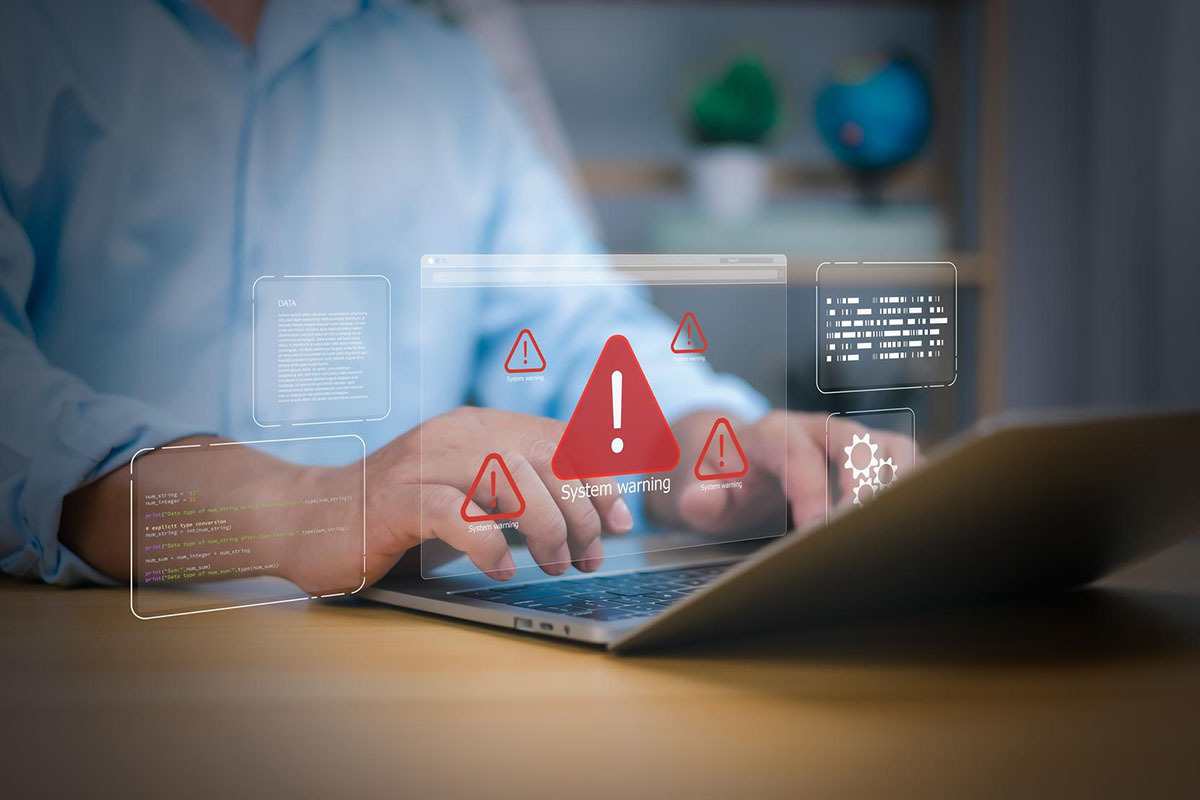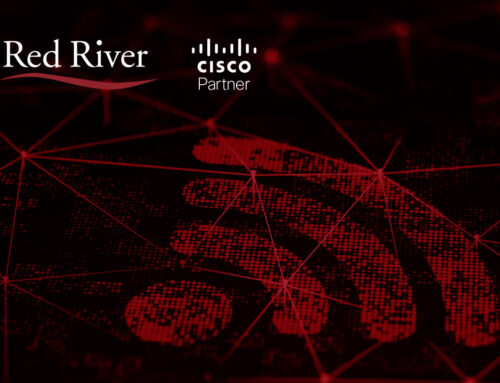
Building a Stronger Security Posture with Microsoft Defender XDR
Quick Answer: Microsoft Defender XDR unifies threat detection across endpoints, cloud and identities to deliver advanced managed detection and response. By integrating with Microsoft’s security ecosystem, it automates attack disruption, exposure management and recovery, in turn reducing dwell time, eliminating alert fatigue and strengthening enterprise defenses through a single, proactive security platform.
Using a variety of nefarious skill sets, hacking gangs are coordinating an increased number of attacks on businesses. According to a 2024 IBM Threat Index Report, ransomware gang activity spiked by 56 percent after accounting for only 17 percent of incidents in 2021. The same largely holds true of tight-knit hacking groups that work together to expose vulnerabilities in a network.
Knowing that companies are taking advantage of the cost savings and efficiencies associated with the cloud, bring your own device (BYOD) policies and other digital opportunities, just about every organization’s attack surface has expanded exponentially. That’s primarily why industry leaders are turning to Microsoft Defender XDR to unify operational defenses across their endpoints and cloud landscapes.
Using a forward-thinking, reliable managed detection and response solution ranks among the best ways to close security gaps and protect sensitive and valuable assets. Microsoft Defender XDR is the logical next step because it outpaces traditional endpoint security. These are reasons why integrating this advanced managed detection and response approach into your security posture is worth considering.
Time to Replace Traditional Endpoint Security
It may not come as a surprise, but the seismic shift to the cloud and remote workforces has resulted in massive distribution point sprawl within organizations. Along with being considered inefficient and excessive, distribution points in a network stretch managed IT and cybersecurity measures thin.
The average corporation reportedly has more than 65,000 endpoint devices that cannot be adequately tracked by the IT department. This blind spot has led to more than 50 percent of organizations experiencing five or more cyberattacks on endpoint devices annually. These are two traditional endpoint security approaches that are no longer capable of stopping sophisticated hackers.
Traditional Antivirus
Antivirus software remains an important support product. Traditional AV was created to help secure on-premises and endpoint devices by scanning stored information and apps and then comparing the findings to known malware and ransomware. If a malicious file is identified, an antivirus product typically blocks it. The approach did not keep pace with the fast-evolving threats launched by cybercriminals on a daily basis, prompting cybersecurity professionals to develop endpoint detection response tools.
Endpoint Detection Response
The initial endpoint detection response (EDR) tools were designed to deliver less passive digital defenses. They greatly enhanced the ability to mature with the changes hackers made to get around malware and ransomware detection. The applications scanned endpoint devices in search of questionable activities.
A game changer not too many years ago, numerous EDR approaches included centralized platforms. The ability to conduct wide-reaching security oversight from a single position streamlined threat detection and truncated response times. But growing off-premises networks and the introduction of remotely connected devices have, again, softened the attack surface of once robustly defended networks. The logical next step was to develop powerful extended detection and response (XDR) tools.
Extended Detection and Response
A key difference between XDR and its predecessors is the way it approaches endpoint cybersecurity protection. On the surface, XDR puts its energy into identifying anomalies and threat incidents throughout endpoints that connect to the network, as well as cloud activities. Rather than scan and compare similar antivirus packages or provide the limited bandwidth of EDR, XDR can be considered a ubiquitous managed detection and response safeguard.
The best XDR opportunities deliver comprehensive threat detection and response proficiencies across complex commercial landscapes that include on-premises frameworks, multi-cloud digital assets and endpoint devices for staff members, as well as third-party vendors with login credentials. By consolidating and coordinating data security, XDR poses a significant obstacle to advanced persistent threats when it is properly managed.
What is Microsoft Defender XDR?
Cybersecurity insiders view Microsoft Defender XDR as an integrated or unified solution because it gives security professionals a single observation point across the digital setting that spans well beyond the capabilities of AV or EDR. It flips the semi-passive approach of AV into a heavily proactive one that looks for threats.
Defender XDR also exceeds the scope of EDR by reaching into cloud environments, email, apps, network user activity, on-premises hardware and wide-reaching types of endpoint devices. Essentially, it fills any potential EDR gaps and hardens an enterprise’s data protection.
By uniting managed detection and response activities, Microsoft Defender XDR serves as a distinct security system that probes, detects and responds to emerging threats in real-time. It may be helpful to think about the difference between AV, EDR and XDR this way. If EDR found active malware, it would quickly send an alert. But if XDR found the same malicious application, it would gather intel that might include its origin and how it got into the system in the first place.
How Defender XDR Works
Discussions regarding Defender XDR tend to revolve around the term “unified.” Managed IT and cybersecurity experts understand the meaning from an insider’s perspective. On one hand, Defender XDR is considered unified because it investigates and responds to multiple digital landscapes and lets users see it clearly from one pivotal location. On the other hand, it works in harmony with the following commonly used Microsoft business applications in a way others cannot.
- Microsoft Defender for Endpoint
- Microsoft Defender for Office 365
- Microsoft Defender for Identity
- Microsoft Entra ID Protection
- Microsoft Defender for Cloud Apps
- Microsoft Defender for Cloud
For organizations that are already utilizing the vast Microsoft ecosystem, Defender XDR adds security measures and binds them together. Along with inserting value-added security measures within each element, Defender XDR has the capacity to detect liabilities and risks across different applications by correlating information. The most deceptive, malicious applications might otherwise remain embedded. As you might surmise, there are significant cost and efficiency advantages to staying within the Microsoft family.
How Does Microsoft Defender XDR Strengthen Enterprise Security?
We’ve covered the way Defender XDR delivers unified managed detection and response across landscapes, endpoint devices, email, login identities and how it gives companies that leverage Microsoft products value-added benefits. Those are all excellent reasons to include this next-gen cybersecurity component in any operation’s defensive posture. That being said, these additional ways Microsoft Defender XDR strengthen enterprise security.
Threat Disruption

An offshoot of threat hunting, Defender XDR is uniquely positioned and forward-facing to insert itself into the fray, much to the chagrin of hackers. Like other anti-hacker threat hunting weapons, Defender XDR searches for the seemingly innocuous signs of unauthorized activity.
It uses Kusto Query Language (KQL) to seek out and assess historical data throughout a corporate business network. It also leverages other Microsoft security applications to make automated comparisons. This extra step helps Defender XDR identify existing and emerging threats.
But Microsoft Defender XDR doesn’t simply issue a critical alert or contain a creeping virus. It actually goes to work disrupting and thwarting the attack.
The AI-driven attack disruption attribute metes out a pre-determined response in real time. Even sophisticated hacking schemes cannot find a workaround to Defender XDR’s attack disruption feature.
Exposure Management
Company leaders are generally familiar with a variety of risk and attack surface management items that form the basis of decisions surrounding productivity, as well as profitability. Digital security has played a significant role in risk management, particularly along the lines of cybersecurity insurance. Microsoft Defender XDR furnishes a deep and different insight into exposure.
Rather than articulating the common vulnerabilities and configuration glitches that occur, Defender XDR offers a more tangible way of grasping digital security shortfalls. The Microsoft solution gathers together wide-reaching risk exposure information and allows users to build out a graph that highlights the relationship between issues. These are concrete examples of how Defender XDR differs from its predecessors.
- Visual Comprehension: Lists often prove cumbersome and obscure. Graphs, by contrast, resonate with leadership teams that do not necessarily have a background in managed IT or cybersecurity. The Microsoft solution helps put people on the same page regarding risk exposure.
- Tactical Advantage: A gap generally persists between data security priorities and profit-driving goal achievement. The vacuum between the critical elements of an enterprise too often leaves decision-makers choosing one over another. That’s not the case with a well thought out Defender XDR component. Digital assets can be aligned with strategic company priorities beyond data protection.
The Microsoft continuous exposure management resource also insulates IP addresses and Software as a Service (SaaS) applications. A recent Gartner report indicates that “organizations prioritizing their security investments based on a continuous threat exposure management program will be three times less likely to suffer from a breach.” Microsoft Defender XDR uses a holistic approach to its 24/7 exposure monitoring, giving more professionals an opportunity to engage in risk-based leadership decisions.
Benefits of Microsoft Defender XDR
How fast does your current cybersecurity posture detect, deter and expel threat actors? If your company’s data protection strategy utilizes recent resources, it probably works pretty fast. But, how fast is fast enough?
A garden-variety hacker can exploit an endpoint or cloud vulnerability and steal sensitive and valuable information in a matter of minutes. The longer the dwell time a cybercriminal enjoys, the worse the outcome for hard-working people.
While a good number of digital security tools work quickly, Microsoft Defender XDR can shrink or eliminate dwell time altogether. Largely due to its ability to work in concert with other Microsoft security resources and extend its monitoring, threat hunting and attack disruption capabilities across differing environments, it greatly reduces the chance a hacker would have enough time to succeed. These are other crucial benefits that come with adopting Microsoft Defender XDR.
- Single Pane of Glass: It replaces the sometimes-confusing security portals with a single interface. By centralizing exposure and threat information into a simplified, visually tangible experience, Defender XDR is like looking through a clear pane of glass.
- Automated Recovery: Organizations integrate security postures such as zero trust architecture because human error can open the door to a cyberattack. That being a reality of our digital age, Defender XDR provides automated systems recovery through Microsoft’s savvy use of AI. Fast recovery times mean getting back to work quickly and higher productivity.
- Eliminate Alert Fatigue: The managed detection and response resource prioritizes threats and vulnerabilities to ensure cybersecurity professionals aren’t wasting valuable time chasing down low-level risks. Establishing automated attack disruption protocols that make sense for your company promotes efficiency.
It’s important to keep in mind that Microsoft Defender XDR is a scalable endpoint, cloud and network data security product. Designed for organizations of all sectors and sizes, business leaders can increase their utilization in conjunction with need and growth. The managed detection and response resource also ranks among the most cost-effective ways to harden your system’s attack surface, even though it is strewn across the cloud and remote endpoint devices.
Why Defender XDR is a Critical Tool Right Now
As the evolution of endpoint cybersecurity measures implies, cybercriminals continue to come up with new schemes and workarounds to breach networks, pilfer off valuable data and inflict ransomware demands. The reason thought leaders are installing zero trust architecture is because we’ve all come to terms with the fact that hackers and ethical cybersecurity professionals are involved in an ongoing global chess match.
Just as other newly developed data security solutions of the past were critical at the time, so is Microsoft Defender XDR. Established as a significant deterrent to hackers, having the best protection in place prompts digital thieves to try somewhere else. There’s no reason to be the low-hanging fruit when Defender XDR can fortify your defenses right now.
Contact Red River to Discuss Microsoft Defender XDR
At Red River, we recognize the difficulty of safeguarding digital information across multiple cloud locations and endpoint devices. We work diligently to craft the determined cybersecurity protocols needed to detect, deter and expel threat actors.
Our cybersecurity experts are available to discuss, design and launch a scalable Microsoft Defender XDR that protects your digital interests. If you would like to learn more about the Microsoft security tools we recommend, contact us today by calling or filling out our online form. Let’s get the process started!

written by
Corrin Jones
Corrin Jones is the Director of Digital Demand Generation. With over ten years of experience, she specializes in creating content and executing campaigns to drive growth and revenue. Connect with Corrin on LinkedIn.




